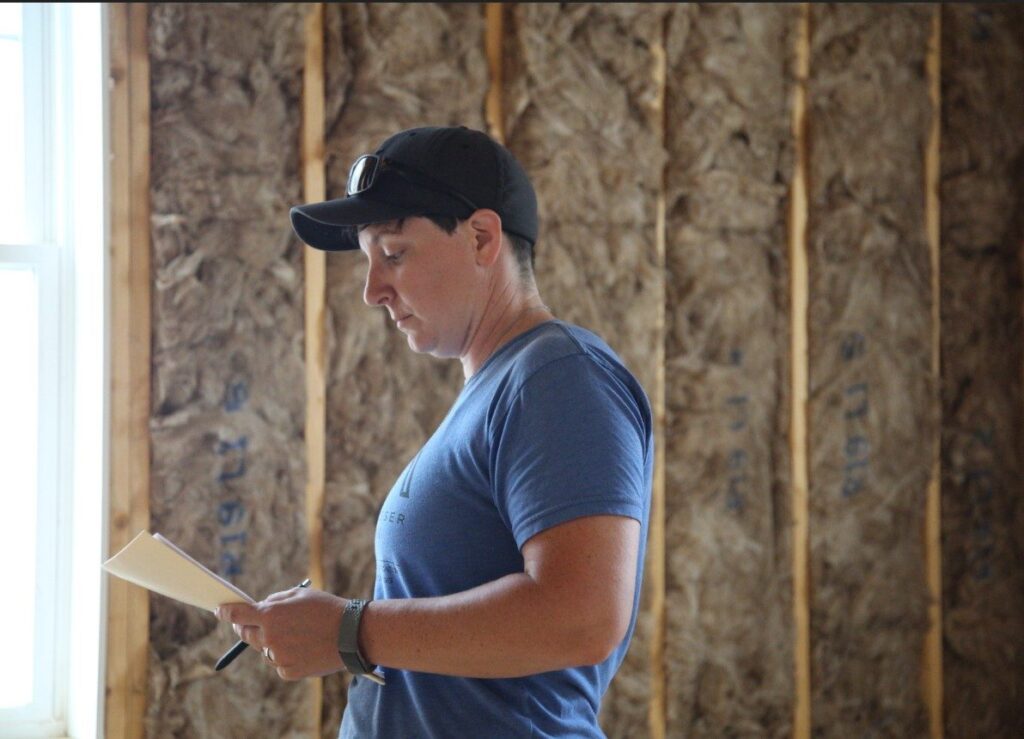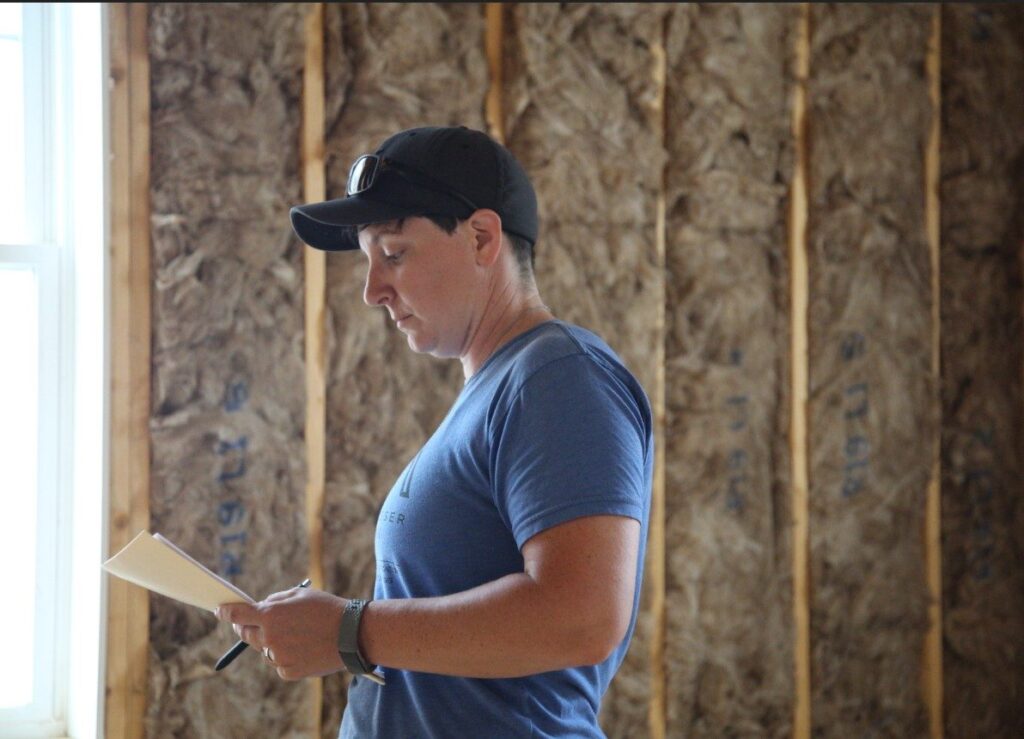Breaking Through: Green Built Homes Certification Program Hits 1,500 Milestone
Garret K. Woodward
What once was considered a fringe industry has now become a force in the housing market of Asheville and greater Western North Carolina.
“It does seem like a green-certified house in our market has become less of a luxury and more of a necessity, which I think is great,” said Jody Guokas, founder and president of JAG and Associates Construction. “It’s somewhat expected if you’re building new construction in Asheville that you’re going to be building with some sort of environmental consciousness. And that’s kind of our goal to be creating a product and a program that becomes the norm — green certification has become a pretty strong part of the market.”
In the spring of 2018, Green Built Alliance’s own Green Built Homes certification program reached the milestone of having certified 1,500 houses since its inception in 2004.
“Green Built Homes has been successful by providing education and a road map to building green, setting builders up for success on their first home. Third-party raters inspect each home in progress to not only prevent greenwashing through third-party verification, but also to catch mistakes before it is too late,” said Green Built Homes Program Director Maggie Leslie. “Every builder wants to build a quality home, but with many trades on site, it can be hard to catch every little mistake. The job of the rater is to inspect the many minor details that can have a lasting impact on indoor air quality, durability, and efficiency for the life of the home.”
From the ground up
While growing substantially over the years, the program has maintained a consistent focus on helping small- and medium-sized home builders remain competitive in the green building industry.
“We’re fortunate here in Western North Carolina and Asheville to have so many passionate green builders,” said Greg McGuffey, president of Earthtone Builders, who joined the program in 2005. “Matched with a population that’s also passionate about the environment, we have a perfect setting to advance the green building industry as shown by this milestone.”
Since starting to work with Green Built Homes in 2006, Guokas’ company has become one of the program’s largest certifiers. As of the summer of 2018, JAG and Associates Construction had built and certified 126 houses through Green Built Homes, with nearly 20 other projects registered and in progress.
“There are some other green programs out there that are less stringent and really require less verification, where you just fill out the paperwork, sign it and send it in,” Guokas said. “But, with Green Built Homes, there’s that guaranteed third-party verification and inspection component, which to me gives it real value. I’m not just telling you I build green homes; I’m proving it you by bringing in this third-party inspector to verify all things we’re doing.”
With multiple levels of certification (certified, silver, gold, platinum, net zero ready, and net zero), the program offers guidelines for green building, workshops, consultation services, technical and marketing assistance, field consultation, design reviews, and more.
“This has been, and always will be, one of my goals as a green builder — to help make green homes the standard, rather than the exception. At the end of the day, this movement is about the health of our planet and our awareness of living in better balance,” McGuffey said. “Creating homes that are built with this awareness in mind is a fundamental part of a brighter future for us all. I look forward to what this future holds and the new normal for what a home can be.”
As the program’s largest certifier, Asheville Area Habitat for Humanity has been involved in Green Built Homes since 2008, certifying 141 homes.
“Just because we’re building simple, decent and affordable housing, it’s still the single biggest investment a family will make, and we feel we have to provide the best-built, best-performing product we can,” said Paul Reeves, director of construction services for Asheville Habitat. “As long as Green Built Homes is certifying homes, I see us staying with them as a local partner. We really do value that local connection, and we’re fortunate to have that knowledgeable, skilled group. We’ll be here for the long haul.”

Dollars and sense
Studies show that investing in green construction is one of the safest investments you can make. Green homes can cost as little as 1 percent more, with an average of 5 to 10 percent more depending on the technologies and the upgrades chosen. (The rater also helps ensure the most cost-effective choices are being made.)
The investment, however, will be easily paid back over the life of the home through monthly energy and water savings, reduced maintenance and increased resale value. During the recession, Green Built Homes proved to hold their value better as home values in the marketplace were declining.
“My passion for Green Built Homes is due to the fact that everyone wins,” Leslie said. “The builder can make more money, the homeowner gets a better home, all while protecting the environment and our children’s future.”
With more than 250 builders having participated in the program since its inception, the program’s builders bring a variety of backgrounds but tend to share similar motivations for certifying with Green Built Homes. For many builders, it’s their way of helping to create a better, healthier and more efficient existence. The fact that Green Built Homes sell faster and for a higher sales price is just an added benefit.
“I’m deeply devoted to good health, and so it just seemed like a no-brainer that if you are going to do something, do it right,” said Sean Sullivan, president of Living Stone Design + Build, who began certifying with Green Built Homes in 2006. “After building and living in my first home for seven years, I discovered that it had radon. From that point on, I’ve been deeply dedicated to having good indoor air quality.”
And while the process of building certified green homes is a reflection of their personal values, builders report that there is increasing recognition of the financial value of their product as well.
“I’ve got a degree from Warren Wilson College in environmental studies, and environmental preservation and energy efficiency is a pretty core part of my values. If I’m going to be building homes, I want to be building them within that same value system,” Guokas said. “What I’ve seen is that banks and appraisers have started to realistically give value to green certification and efficiency, which means the system is actually starting to recognize the value of quality construction.”
Growing into the future
As codes have changed and technologies have advanced, so too has Green Built Homes. The program continues to evolve, becoming more stringent and providing new opportunities.
“Having been involved with the program since its inception, what I am most proud of and what I feel is a true measure of the program’s success, is that many builders started out building certified homes and now build to silver and gold level as their standard,” Leslie said. “By providing continued education on the job site, builders are always learning and they find how simple, affordable adjustments can result in a much better home for the buyer and the environment.”
In 2016, the program added a Net Zero Ready and Net Zero Energy Certification to encourage and reward builders that push the envelope even further and provide homeowners with homes ready for a post carbon world. In less than two years, the program has certified 17 Net Zero and 5 Net Zero Ready homes.
“With our involvement in this program, it’s amazing how good of a house we’re building now 10 years later. Those houses get better every year — energy audit scores are better, air quality, living conditions, quality of build,” Reeves said. “Habitat for Humanity International and all the affiliates in the country have a commitment to sustainable green practices, and the partnership with Green Built Homes brings us to the table.”
For Guokas, that milestone of 1,500 certified Green Built Homes also speaks volumes about the shifting mindsets and legislative priorities within the state’s building sector.
“It’s been interesting to watch that the mainstream is starting to follow green building a little bit, where the North Carolina building code has changed a lot of over the last decade to bring in a lot of things that used to be solely required by green building,” Guokas said. “These things start to push the baseline of construction into a more efficient and higher quality realm. People are starting to catch up, and that’s great. But, now where do we go? It keeps us on our toes to keep pushing ahead and taking our building envelopes to the next level.”
You can also view this article as it was originally published on pages 32-33 of the 2018-2019 edition of the directory.


